#Georges Raillard
Explore tagged Tumblr posts
Text
What color are your dreams?
This is the color of Miró's dreams:

Joan Miró Photo: This Is the Color of My Dreams 1925 Oil on canvas 96.5 × 129.5 cm "Ceci est la couleur de mes rêves," means "this is the color of my dreams."
When the writer Georges Raillard asked about the meaning of the word “Photo,” Miró said, “I started with the idea of a photo—I don’t remember at all what photo it was. I neither did a collage nor a reproduction of it. I simply painted the word ‘photo.'”
In the realm of artistic discourse, conversations between creators often spark new ideas, reshape perspectives, and elevate the understanding of art itself. One such dialogue that left an indelible mark on the art world was between Joan Miró, the renowned Catalan surrealist painter, and Georges Raillard, a French art critic and historian. Their exchanges not only shed light on Miró's artistic vision but also enriched the broader understanding of surrealism and abstraction in the 20th century.
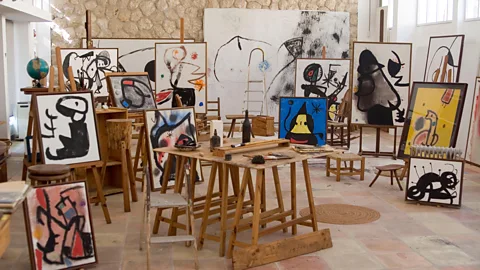
Miró, known for his vibrant and whimsical creations, engaged in a profound dialogue with Raillard, delving into the depths of artistic expression. Their discussions traversed the realms of symbolism, abstraction, and the subconscious mind, offering glimpses into Miró's creative process and philosophical underpinnings.
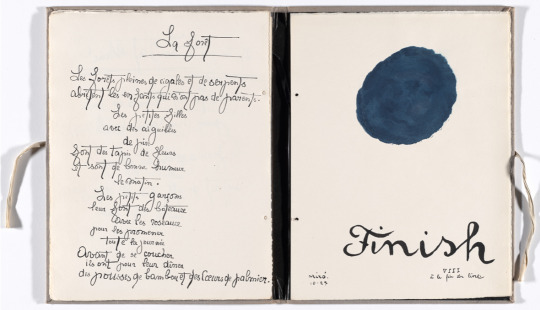
Joan Miró Plate (folio 18) from Il était une petite pie (Once There Was a Little Magpie) 1927–28, published 1928
At the heart of Miró's art lies a fascination with the subconscious and the spontaneous. His works often feature playful forms, vivid colors, and symbolic imagery, inviting viewers into a world of dreamlike abstraction. Through his art, Miró sought to tap into the realm of the unconscious, where pure creativity flows uninhibited by rational constraints.
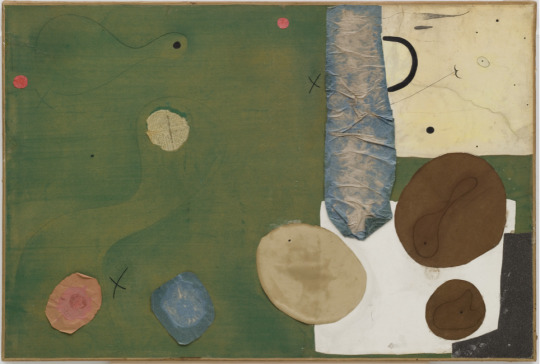
Joan Miró Collage 1929 Conté crayon, gouache, ink, flocked paper, newspaper, abrasive cloth, and various papers on flocked paper 72.7 x 108.4 cm
In his conversations with Raillard, Miró elucidated his belief in the power of art to transcend the limitations of language and logic. He saw painting as a means of communication that bypassed verbal constructs, speaking directly to the emotions and imagination of the viewer. For Miró, the act of creation was a liberating journey into the unknown, where intuition guided the brush and spontaneity reigned supreme.
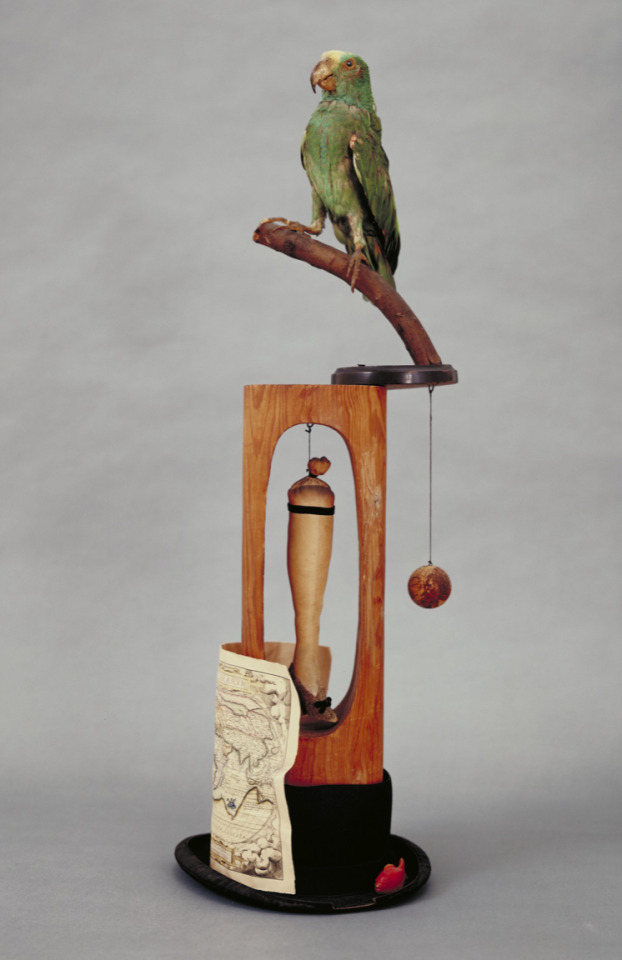
Joan Miró Object Barcelona spring 1936 Stuffed parrot on wood perch, stuffed silk stocking with velvet garter and doll's paper shoe suspended in hollow wood frame, derby hat, hanging cork ball, celluloid fish, and engraved map 81 x 30.1 x 26 cm
Raillard, in turn, provided critical insight into Miró's works, contextualizing his work within the broader currents of surrealism and abstraction. Through his writings and discussions with Miró, Raillard contributed to the appreciation and understanding of the artist's distinctive style and philosophical outlook.
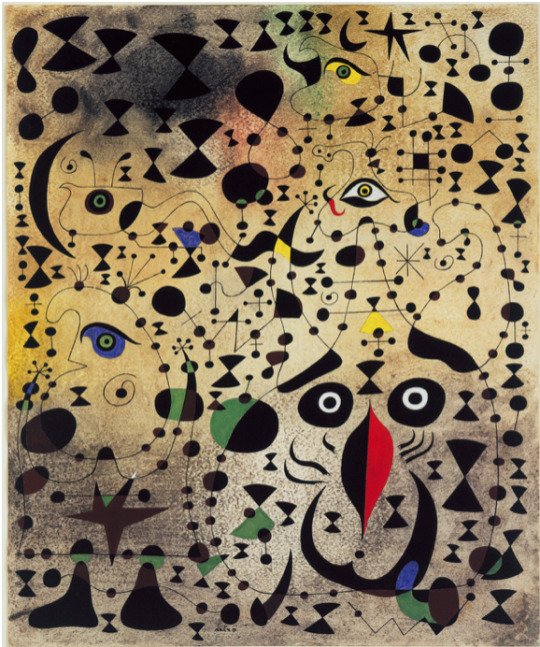
Joan Miró The Beautiful Bird Revealing the Unknown to a Pair of Lovers (Le Bel oiseau déchiffrant l'inconnu au couple d'amoureux) (from the Constellation series) 1941 Gouache, oil wash, and charcoal on paper 45.7 x 38.1 cm
Together, Miró and Raillard forged a dialogue that transcended the boundaries of time and space, leaving behind a legacy of artistic exploration and intellectual inquiry. Their conversations continue to resonate with art lovers and scholars alike, offering profound insights into the mind of one of the 20th century's most visionary artists.
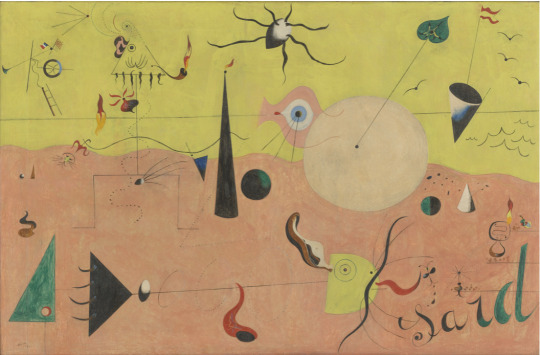
Joan Miró The Hunter (Catalan Landscape)Montroig July 1923-winter 1924 Oil on canvas 64.8 x 100.3 cm
The dialogue between Joan Miró and Georges Raillard serves as a testament to the transformative power of artistic exchange. Through their discussions, they not only deepened the understanding of Miró's art but also enriched the broader discourse on surrealism, abstraction, and the nature of creativity itself.

“Rather than setting out to paint something, I begin painting and as I paint, the picture begins to assert itself.” - Joan Miró
The conversation can be found as Düşlerimin Rengi Bu - Georges Raillard ile Söyleşiler from Yapı Kredi Yayınları in Turkish.
1 note
·
View note
Text
Brief von Roland Barthes an Georges Raillard: "Es gibt eine Zeit im Jahr, in der man das Recht haben muss, die intellektuelle Maschine anzuhalten"
Brief von Roland Barthes an Georges Raillard, Paris 7. Januar 1973: ”Lieber Freund, ich danke Ihnen für Ihren Brief, aber meine Verlegenheit, Ihnen zu antworten, ist zweifach. Einerseits kann ich mich nicht verpflichten, beim Kolloquium anwesend zu sein (ich hatte es Ihnen gesagt). Ende Juni bis Anfang Juli ist die einzige Zeit im Jahr, in der ich eine Urlaubsreise machen kann, da ich vorher…

View On WordPress
0 notes
Link
Par René Farabet - Avec Jean-Luc Parant, Titi Parant, Marie-Sol Parant, Sibylle Parant, Alain Borer, Michel Butor, Michel Camus, Jean Clareboudt, Gérard Durozoi, Patrick Garcia, Jean-Marie Le Sidaner, Bernard Noël, Georges Raillard, Michel Sicard et Michel Vacher.
Réalisation Marie-Ange Garrandea.
#Jean-Luc Parant#Titi Parant#Marie-Sol Parant#Sibylle Parant#Alain Borer#Michel Butor#Michel Camus#Jean clareboudt#Gérard Durozoi#Patrick Garcia#Jean-Marie Le Sidaner#Bernard Noël#Georges Raillard#Michel Sicard#Michel Vacher#René Farabet#Marie-Ange Garrandea#France Culture
2 notes
·
View notes
Text
“Ceci est la couleur de mes rêves”, peinture-poème datant de 1925. Elle montre que les songes de Miró étaient bleu ciel et bleu Méditerranée, par opposition à la couleur ocre de la terre.
Joan Miró, dans un livre d’entretiens avec Georges Raillard paru en 1977, avait précisé : “Je ne rêve jamais la nuit, je dors comme un bébé mais dans mon atelier je suis en plein rêve. […] C’est quand je travaille, quand je suis éveillé que je rêve. […] Le rêve est dans ma vitalité, pas dans les marges, pas provoqué. Jamais.”
Les Trois Bleus, qui appartiennent à la collection du Centre Pompidou. Ces toiles grand format datant de 1961 donnent raison au philosophe Gaston Bachelard, pour qui le bleu était “la couleur profonde des songes”:
“Dans le domaine de l’air bleu plus qu’ailleurs, on sent que le monde est perméable à la rêverie la plus indéterminée. C’est alors que la rêverie a vraiment de la profondeur. Le ciel bleu se creuse sous le rêve. Le rêve échappe à l’image plane. Bientôt, d’une manière paradoxale, le rêve aérien n’a plus que la dimension profonde. Les deux autres dimensions où s’amuse la rêverie pittoresque, la rêverie peinte, perdent de leur intérêt onirique. Le monde est alors vraiment de l’autre côté de la glace sans tain. Il y a un au-delà imaginaire, un au-delà pur, sans en-deçà. D’abord il n’y a rien, puis il y a un rien profond, ensuite il y a une profondeur bleue.“ ( in L’Air et les songes, Essai sur l’imagination du mouvement)
“Moi qui contemple le ciel bleu, je ne suis pas en face de lui un sujet acosmique, je ne le possède pas en pensée, je ne déploie pas au-devant de lui une idée du bleu qui m'en donnerait le secret, je m'abandonne à lui, je m'enfonce dans ce mystère, il se pense en moi , je suis le ciel même qui se rassemble, se recueille et se met à exister pour soi, ma conscience est engorgée par ce bleu illimité.” (Merleau-Ponty, Phénoménologie de la perception)
Il ne fait aucun doute que Joan Miró a été un homme engagé tout au long de sa carrière exceptionnelle. Il a défendu la Seconde République espagnole pendant la guerre civile de 1936-1939 [qui devait déboucher sur la dictature franquiste, en place jusqu’en 1977], il a peint une œuvre critique sur l’exécution de [l’anarchiste catalan] Salvador Puig Antich en 1974 et il a soutenu l’adoption du statut d’autonomie catalan en 1978 – autant d’engagements qui font de lui un symbole, un artiste qui utilisait son travail pour dénoncer les injustices. Après sa mort, son œuvre est toutefois restée un moyen de rassembler, de montrer que nous condamnons toute forme de violence.
4 notes
·
View notes
Photo

Tàpies, Antoni. Georges Raillard, Maeght Editeur, Paris. 1976. Enthält 2 doppelblatt-grosse Original-Lithographien (gedruckt bei Arte Adrien Maeght, Paris #antonitapies #kunstkiosk #kunstkioskimhelmhaus http://bit.ly/2MK4rjb https://www.instagram.com/p/B13iXejos_j/?igshid=1b2skhlengy1t
0 notes
Link
Miró dijo a la gente de Mallorca: "Perdéis vuestra dignidad, y por haberla perdido se hacen todas esas barbaridades, esos hoteles horrendos, esos apartamentos y urbanizaciones que han destrozado el paisaje". Y añadía, en las conversaciones con Georges Raillard, "… es la tierra, la tierra. Algo más fuerte que yo". En la actualidad, se tiene la conciencia de que el hombre administra la naturaleza desde actitudes antinaturales, guiadas por un impulso esquilmador, aunque ello conduzca a una grave quiebra del equilibrio sobre el que se sustenta el planeta tierra. La voracidad de las sociedades opulentas, temerosas quizás de las multitudes hambrientas de su propia especie, están perdiendo el instinto, que otros animales sí tienen, de no agostar el espacio en el que viven. Sobreexplotación de las tierras con cultivos ficticios fuera de los ciclos naturales con el fin de producir ingentes cantidades de alimentos que satisfagan una glotonería patológica. Cruel bestialidad con los pobres animales, sometidos a un engorde y reproducción que genera carnes envenenadas por la desesperación. En fin, destrucción de los parajes naturales con una especulación que crea edificaciones condenadas al pronto deterioro. Talas y detritus... Y casi todo irreversible. María Zambrano manifiesta su nostalgia de la tierra, "Nostalgia de la más presente, de la que nunca nos falta. La tierra se ha convertido simplemente en materia, ha dejado de ser cosa sustentadora de todas las cosas, para ser algo abstracto, lejano; para ser una gran desilusión; algo material. Pero el hombre está, vive sobre la tierra... se olvida de ello, quiere olvidar esta condición inexorable de su existencia: la de estar sobre la tierra en tratos con un mundo sensible, del que no puede evadirse" .
0 notes
Link

Par René Farabet - Avec Jean-Luc Parant, Titi Parant, Marie-Sol Parant, Sibylle Parant, Alain Borer, Michel Butor, Michel Camus, Jean Clareboudt, Gérard Durozoi, Patrick Garcia, Jean-Marie Le Sidaner, Bernard Noël, Georges Raillard, Michel Sicard et Michel Vacher - Réalisation Marie-Ange Garrandeau.
4 notes
·
View notes